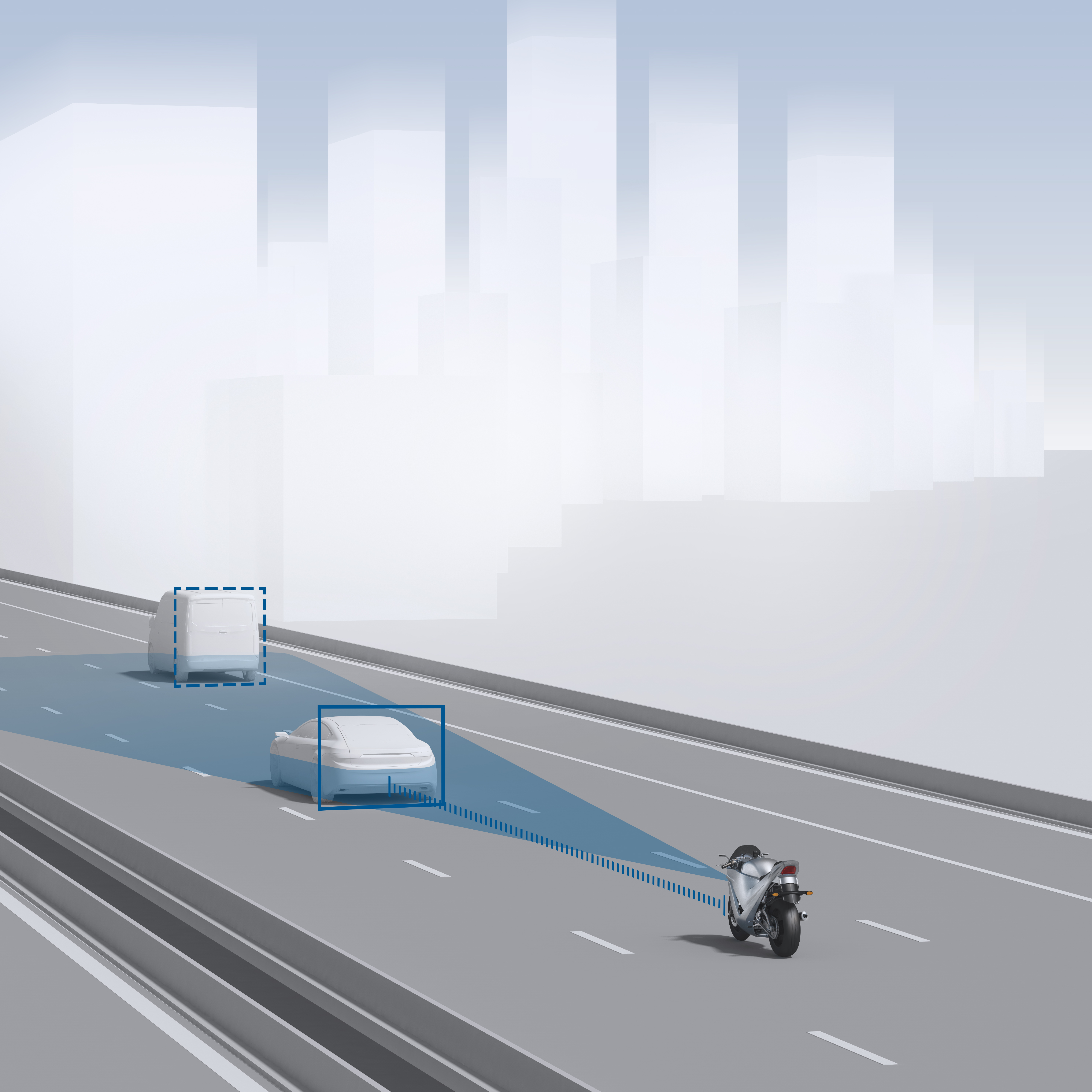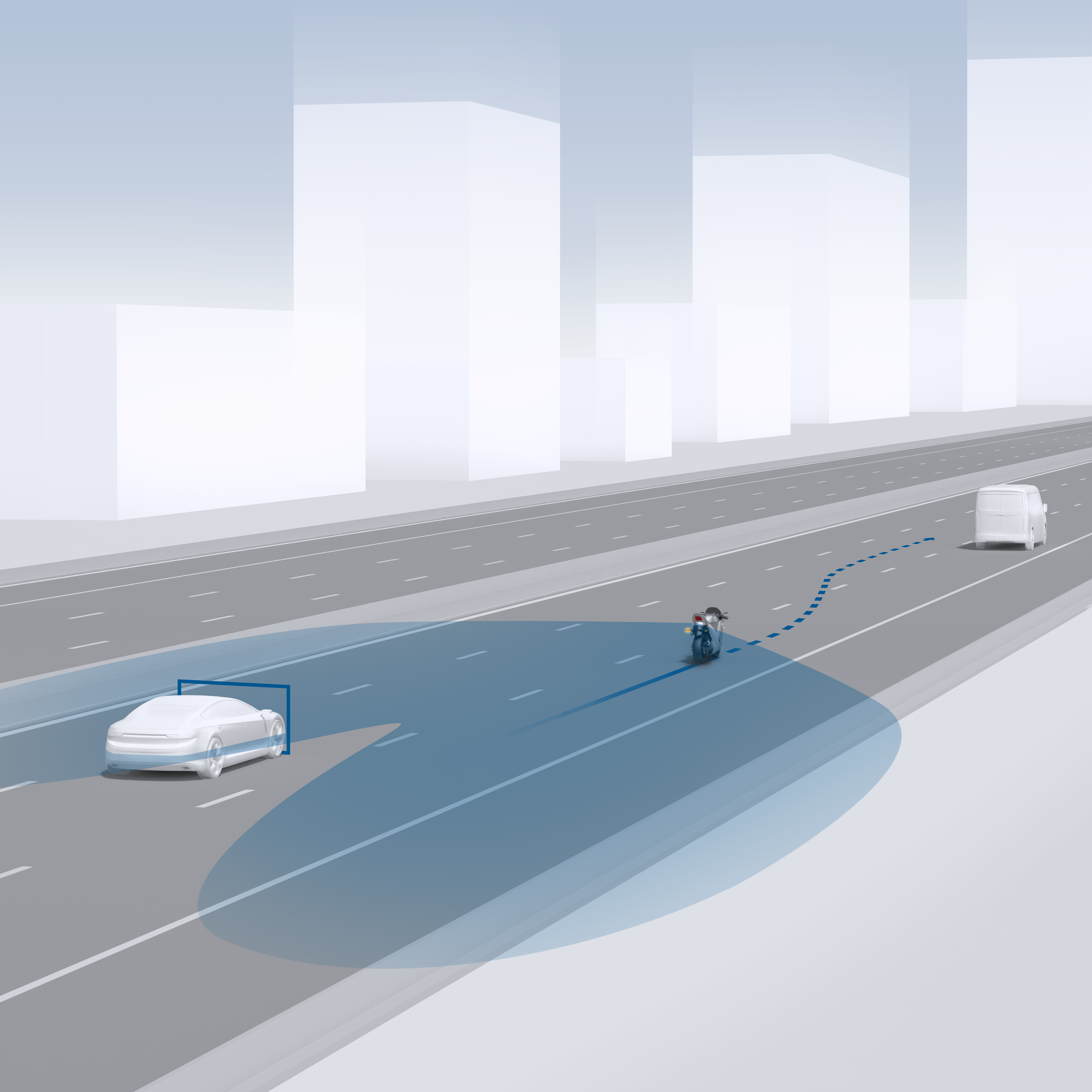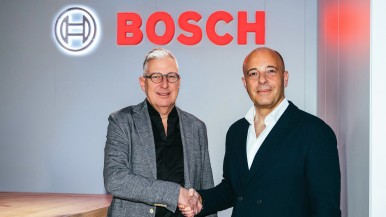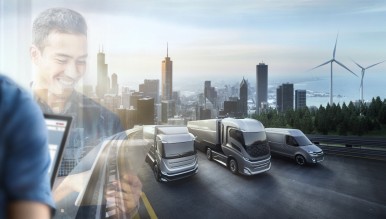Stuttgart, Germany – Cars can be made safer through the addition of crumple zones, airbags, and seat belts. Motorcyclists, on the other hand, face considerably more danger when riding: the risk of dying in an accident is up to 20 times higher for them than for car drivers. In fact, the number of fatal motorcycle accidents in Germany went up by 9 percent last year (source: German Federal Statistics Office). Bosch has a clear vision: no more fatalities for motorcyclists in road traffic. That is why the company has developed a new safety package for motorcycles, comprising adaptive cruise control, forward collision warning, and blind-spot detection. This package is built on technologies that also enable automated driving in cars. The motorcycle manufacturers KTM and Ducati will include the new rider assistance systems in production models as soon as 2020. For Bosch, this is the next step along the path toward accident-free riding – one that doesn’t reduce enjoyment and doesn’t take away motorcyclists’ responsibility. “Bosch is taking motorcycling safety to a whole new level,” says Dr. Dirk Hoheisel, member of the board of management of Robert Bosch GmbH.
Mobility is the largest Bosch Group business sector. According to preliminary figures, it generated sales of 56.3 billion euros in 2023, and thus contributed almost 60 percent of total sales. This makes the Bosch Group one of the leading automotive suppliers. The Mobility business sector pursues a vision of mobility that is safe, sustainable, and exciting. For its customers, the outcome is integrated mobility solutions. The business sector’s main areas of activity are injection technology and powertrain peripherals for internal-combustion engines, diverse solutions for powertrain electrification, vehicle safety systems, driver-assistance and automated functions, technology for user-friendly infotainment as well as vehicle-to-vehicle and vehicle-to-infrastructure communication, repair-shop concepts, and technology and services for the automotive aftermarket. Bosch is synonymous with important automotive innovations, such as electronic engine management, the ESP anti-skid system, and common-rail diesel technology.
The Bosch Group is a leading global supplier of technology and services. It employs roughly 428,000 associates worldwide (as of December 31, 2023). According to preliminary figures, the company generated sales of 91.6 billion euros in 2023. Its operations are divided into four business sectors: Mobility, Industrial Technology, Consumer Goods, and Energy and Building Technology. As a leading IoT provider, Bosch offers innovative solutions for smart homes, Industry 4.0, and connected mobility. Bosch is pursuing a vision of mobility that is sustainable, safe, and exciting. It uses its expertise in sensor technology, software, and services, as well as its own IoT cloud, to offer its customers connected, cross-domain solutions from a single source. The Bosch Group’s strategic objective is to facilitate connected living with products and solutions that either contain artificial intelligence (AI) or have been developed or manufactured with its help. Bosch improves quality of life worldwide with products and services that are innovative and spark enthusiasm. In short, Bosch creates technology that is “Invented for life.” The Bosch Group comprises Robert Bosch GmbH and its roughly 470 subsidiary and regional companies in over 60 countries. Including sales and service partners, Bosch’s global manufacturing, engineering, and sales network covers nearly every country in the world. The basis for the company’s future growth is its innovative strength. At 136 locations across the globe, Bosch employs some 90,000 associates in research and development, of which roughly 48,000 are software engineers.
Additional information is available online at www.bosch.com, www.iot.bosch.com, www.bosch-press.com.










